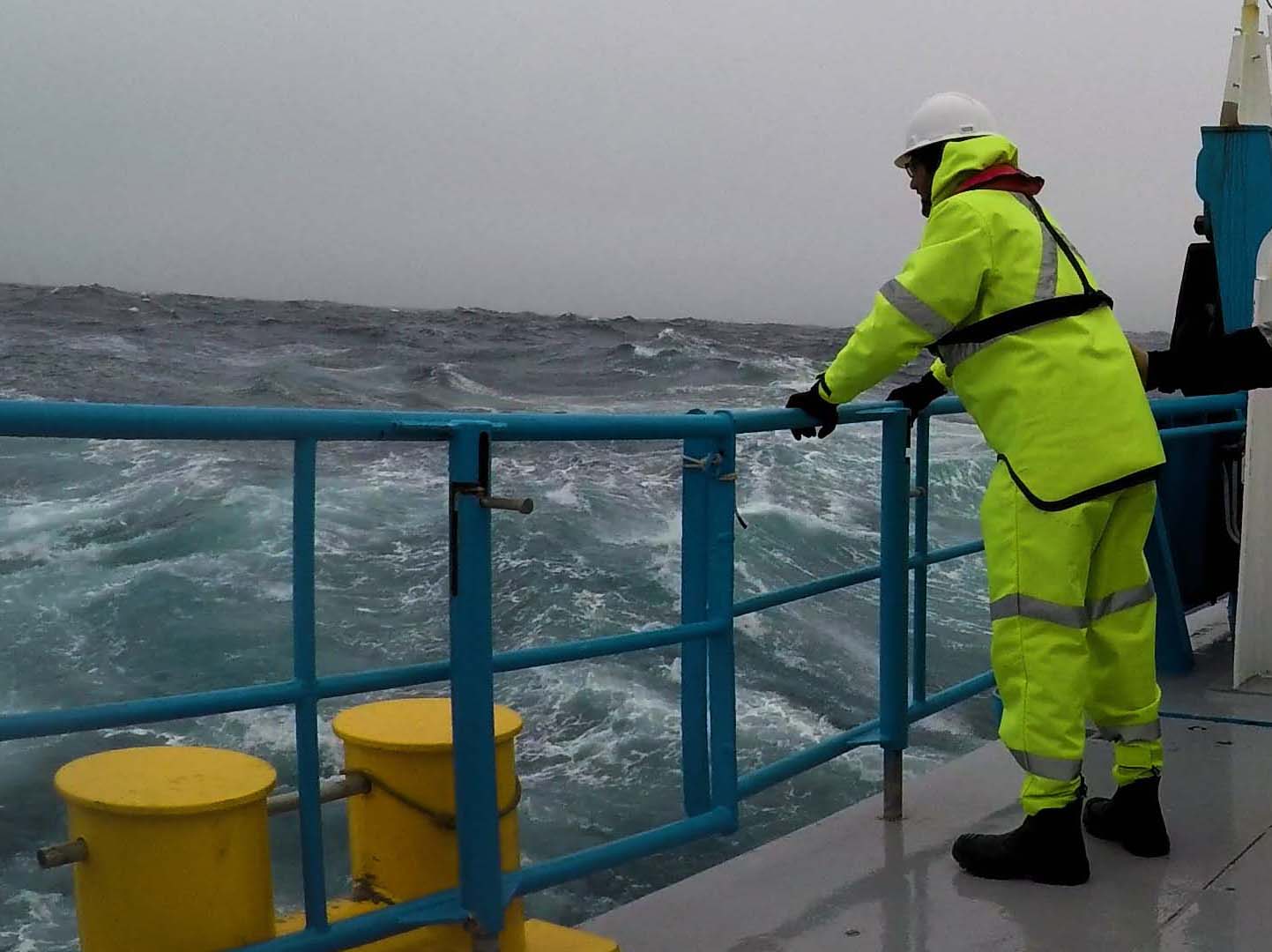
Just one week after travelling outside India for the first time in his life, new IMAS PhD student Ramkrushnbhai Patel found himself on board an Australian research ship heading deep into the Southern Ocean.
The cold and stormy waters to the south of Tasmania were a world away from Ram’s home village in the north western Indian state of Gujarat and the heat he was used to.
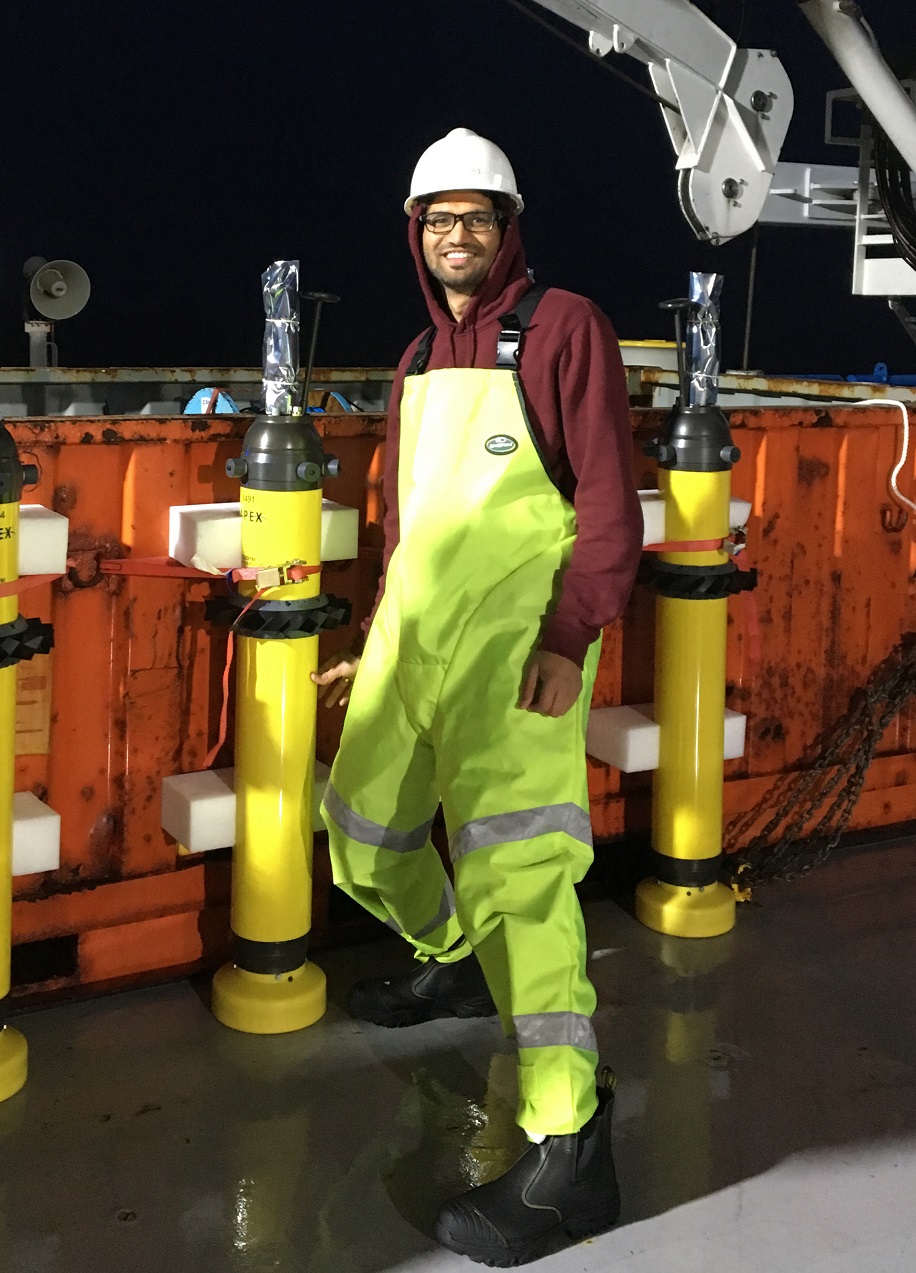 At first the wild weather and the mix of different languages and cultures on board the CSIRO research vessel Investigator were a shock.
At first the wild weather and the mix of different languages and cultures on board the CSIRO research vessel Investigator were a shock.
“I was feeling a bit nervous because my English in the beginning was not that good and then I was sea sick for two days,” he said.
“But my supervisor was really supportive and then I started to get used to those things and it was really fun.
“We worked 12-hour shifts and we didn’t have to do anything on the ship other than working on science, so it was really easy to pass those 12-hours being continuously involved in planning and collecting data, which keeps you busy.”
Scientists on the five-week voyage in March and April 2016 measured exchanges of heat, water, carbon dioxide and oxygen between the ocean and atmosphere, while Ram and his supervisor, Associate Professor Helen Phillips (Pictured, below, right, with Ram on the Investigator), took the opportunity to study the circulation of Southern Ocean eddies.
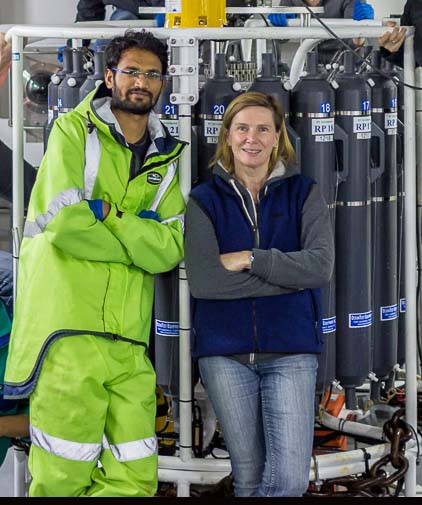
“I usually like colder weather but in India I never get to have that kind of thing, so I look forward to winter or the monsoon season.
“When I first arrived in Hobart that wintery feeling was awesome in the beginning, but it was super chilly and hard for me to adjust.
“Then when I came back from the Southern Ocean, which is much colder than Tasmania, I’d adjusted from really hot to really cold, and then to medium in Hobart, which didn’t really feel cold at all anymore. Now, after three years living here, I go through the whole winter wearing shorts!”
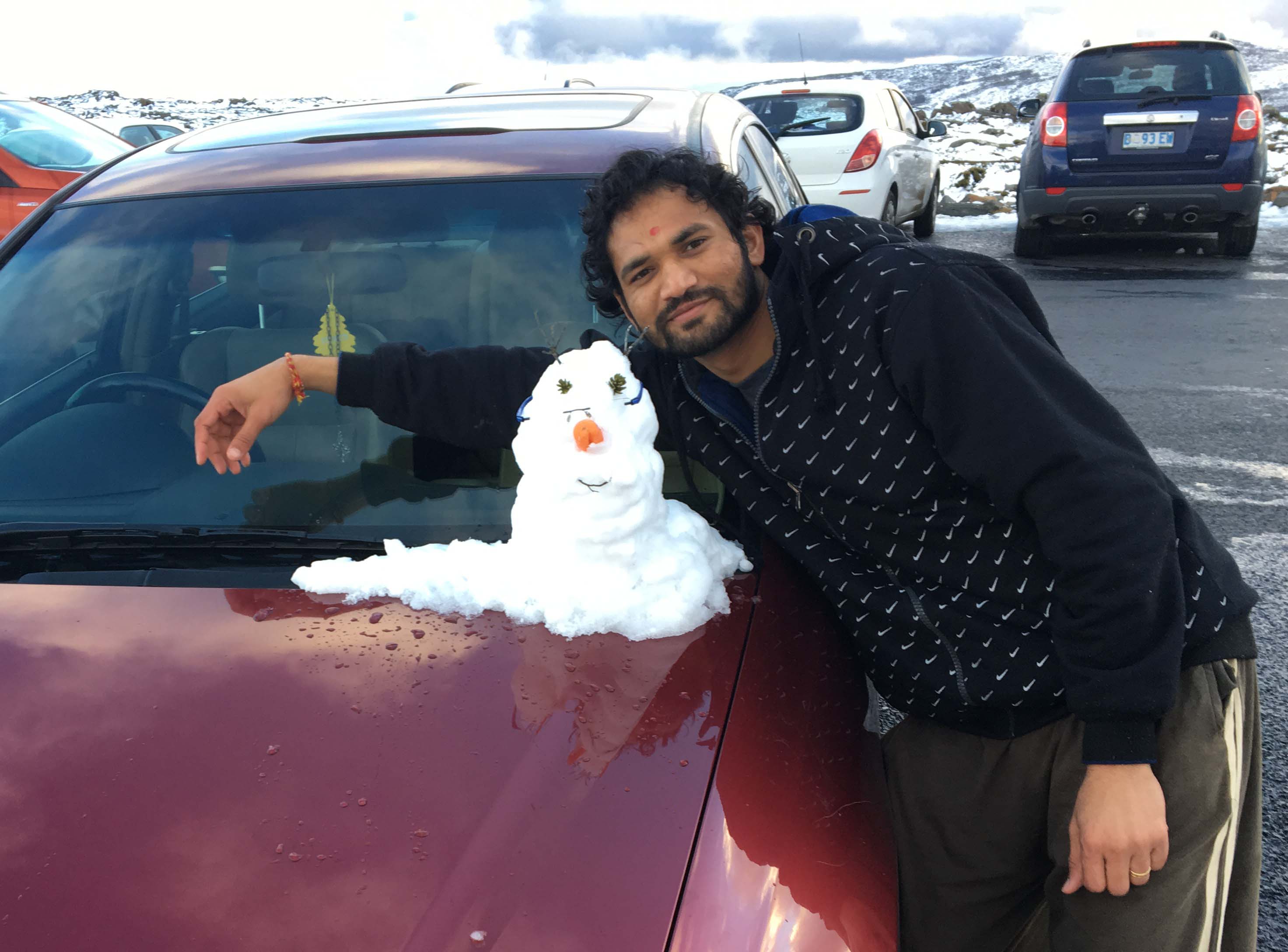 Ram had the opportunity to study for his PhD in Germany or Melbourne but chose IMAS because of the specialised expertise of his supervisors and Tasmania’s easy access to the Southern Ocean.
Ram had the opportunity to study for his PhD in Germany or Melbourne but chose IMAS because of the specialised expertise of his supervisors and Tasmania’s easy access to the Southern Ocean.
He researches the structure of ocean eddies and has already had a paper published that found eddies, which can be between 10 and 100 kilometres across and rotate clockwise as they trace an erratic path across the ocean, can transport two to three times more heat and salt than scientists previously thought.
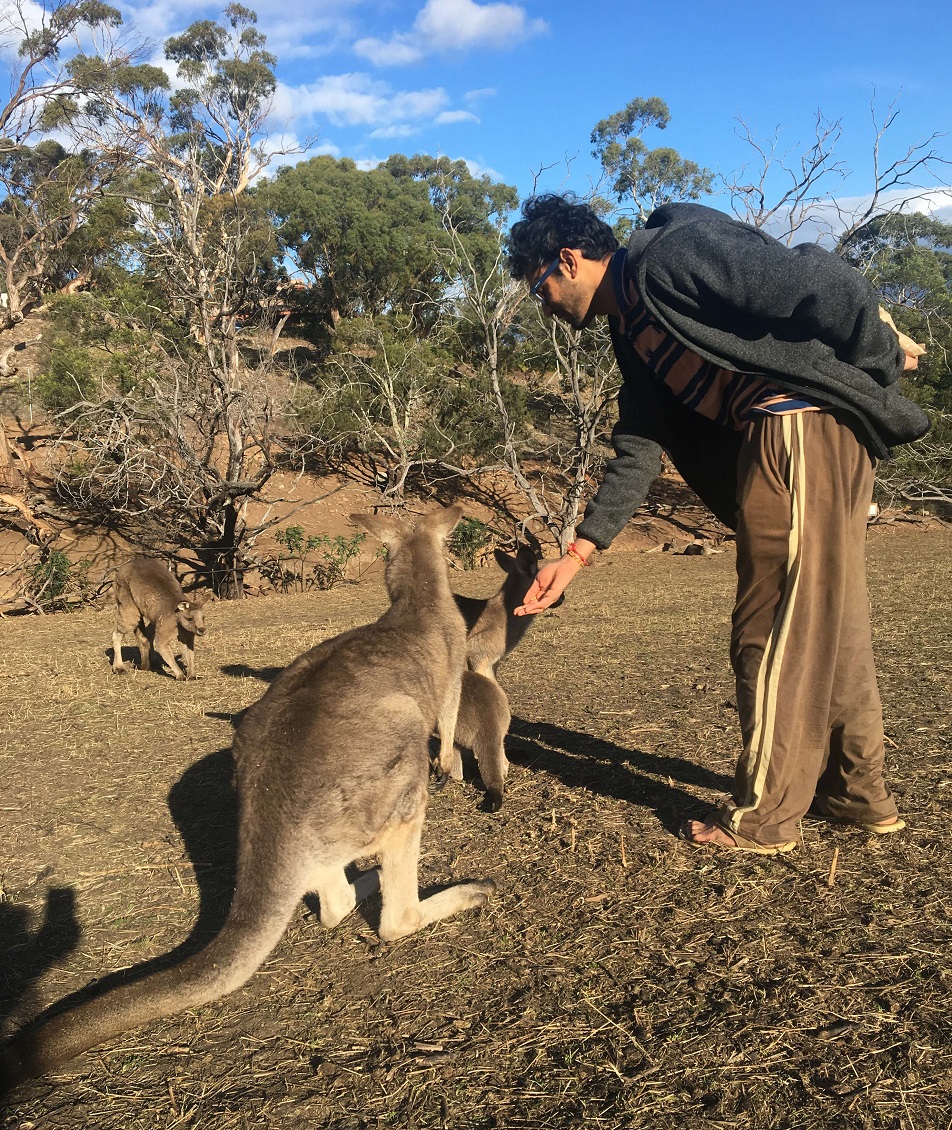 “The project that I was really interested in was offered only at the university here in Tasmania, so that was the main reason I chose it out of the three places I was considering.
“The project that I was really interested in was offered only at the university here in Tasmania, so that was the main reason I chose it out of the three places I was considering.
“I was interested in ocean science and physical oceanography and to get the observations you need you really need access to a big research vessel or instruments that support your research – that’s why I chose IMAS.”
Ram says he enjoys the quiet and friendly community feel of Tasmania.
“I grew up in a village, which is a very small community and a very quiet place.
“When I came here to Tasmania it felt like sort of a village too, but a more advanced village than I used to live in, so it felt nice.
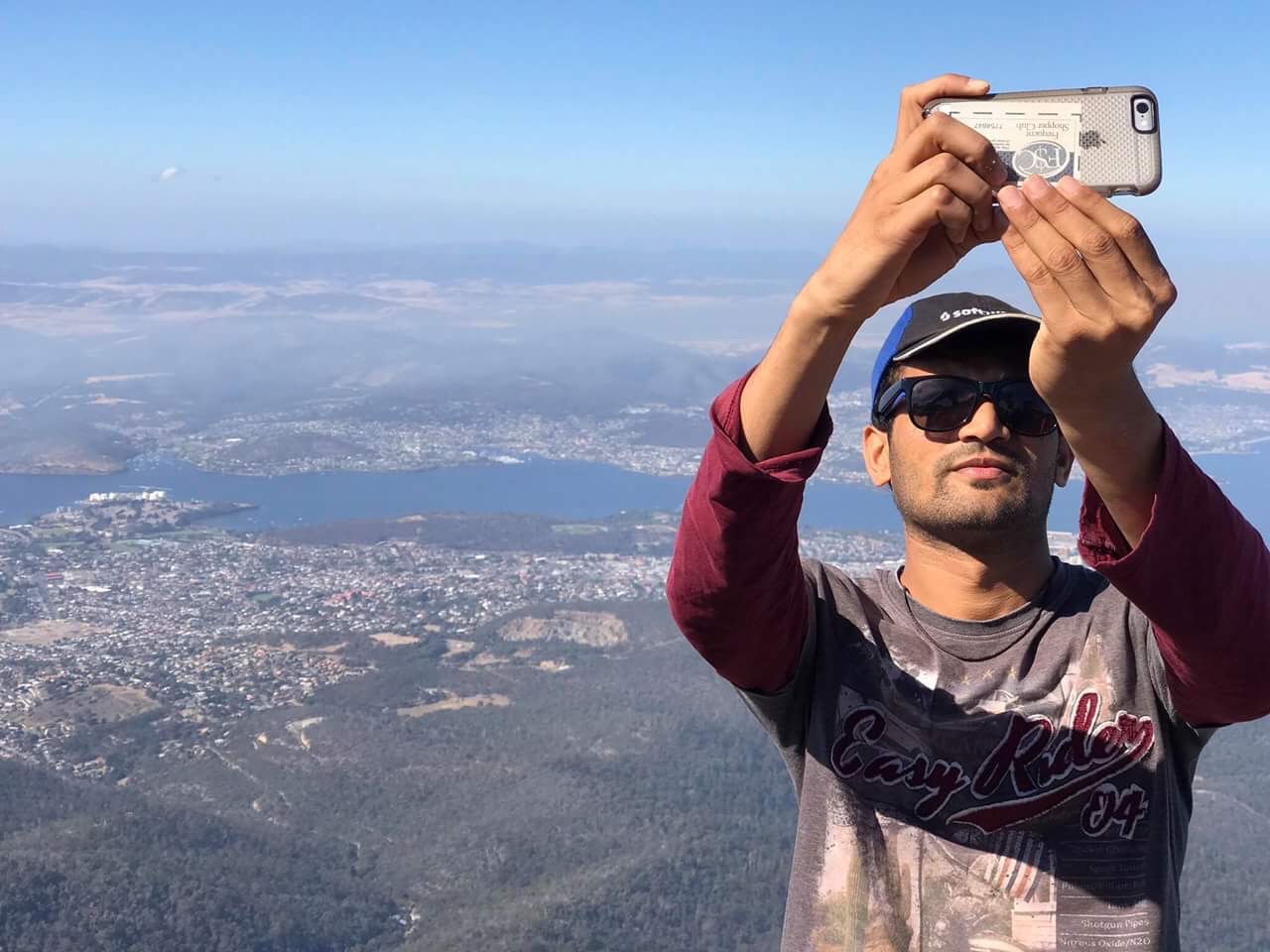
“When I come to IMAS I usually cycle alongside the river. There's a great bike path, with nice breezes, nature, and beauty.
“If I'm tired or need a break I usually go on Mt Wellington to have a look across the city (Image, left, on Mt Wellington).
“Wherever you go in Tasmania, you find the scenery and feel close to nature, and it’s always changing with the weather and the seasons.